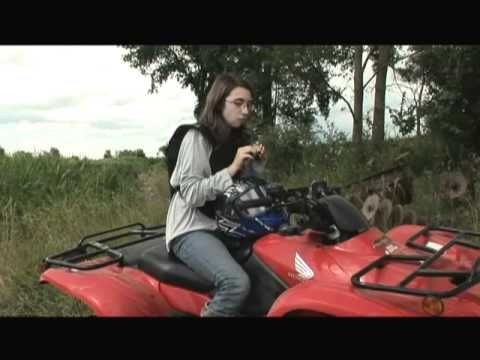All-terrain vehicles (ATVs) are off-road vehicles often used for recreation. In most states, it's legal for older kids and teens to ride them, even without a driver's license. But with the thrills come major safety risks.
ATVs can be unstable and hard to control, particularly at high speeds. Rollovers and collisions happen often, and some of these are fatal. Injuries from riding ATVs are common too and can mean an emergency-room visit. As a result, the American Academy of Pediatrics (AAP) discourages kids and teens ages 16 or younger from driving or riding on ATVs.
If you decide to let your child ride an ATV, make sure he or she follows safety precautions and understands how to safely operate the vehicle. While this helps to reduce the risk of injury or death, the only way to truly keep kids safe is to prevent them from riding ATVs.
ATVs are motorized vehicles that are meant to be used off-road or on dirt roads, not on paved roads or highways. They usually have four large balloon-style tires, with a seat in the middle that a rider straddles while steering by the handlebars. There are still some three-wheeler ATVs around, but manufacturers stopped making them in 1988 due to concerns about stability and safety.
Weighing more than 600 pounds, ATVs have large, powerful engines that allow them to reach speeds of 65 mph or more. They have a high center of gravity and no roll bars, safety cages, or seatbelts, meaning they can tip easily, throw riders and passengers off, or even roll over on top of riders. This can cause serious injury or death, usually because of head injuries. Other common injuries include cuts, scrapes, broken collarbones, and broken arms and legs.
There are no federal regulations or age limits when it comes to riding ATVs. Instead, each state has its own guidelines and laws. Some states require ATV riders to be 16 years old and have a safety certificate. Other states allow kids as young as 10 to ride ATVs as long as they're supervised by an adult with a valid driver's license.
Other states allow kids as young as 10 to ride ATVs as long as they're supervised by an adult with a valid driver's license.
The AAP does not recommend ATV use for children and teens 16 or younger. ATVs can be too large for smaller kids to handle safely, even if it's legal for them to be riding them. Safely operating an ATV requires the driver to make quick decisions, such as speeding up, slowing down, or shifting his or her weight in response to changes in the environment. Kids under 16 are unlikely to be able to make these choices or have the skills to carry them out.
If your child does ride an ATV, make sure you understand and follow the rules of your state. Visit the Consumer Product Safety Commission (CPSC) online for this information. This applies even if your child won't be steering the ATV. Many states don't allow passengers to ride unless the ATV is specifically designed to carry two people.
Kids age 16 and younger should not ride an ATV.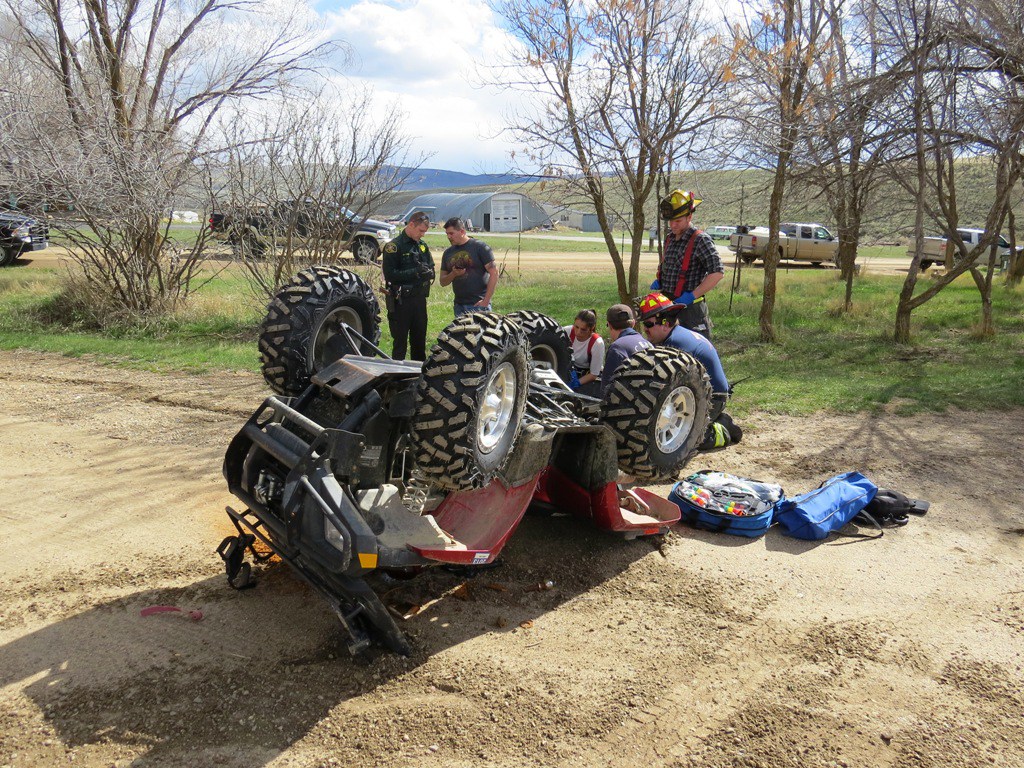
Anyone who does ride an ATV should follow these tips before and during riding:
It's important to never do the following while riding an ATV:

ATV riding will always be risky — and because they're fun, many kids and teens will want to try them. There are no guarantees that kids won't get hurt, even with precautions and protective laws in place. But by making sure that riders follow safety rules and know how to use ATVs safely, parents can do their best to help protect them from being injured.
Reviewed by: Patti Miller, MPP
Date reviewed: July 2018
Four wheeling is a family sport, getting your young ones familiar with ATVs at an early age is always a good idea. But at what age? And what’s the best way to introduce them to ATVs early on?
I get it, you want your kids to be out enjoying the trails with you as soon as possible. But with children, you have to make safety a number one priority. Let’s start with your role as their parent throughout this process.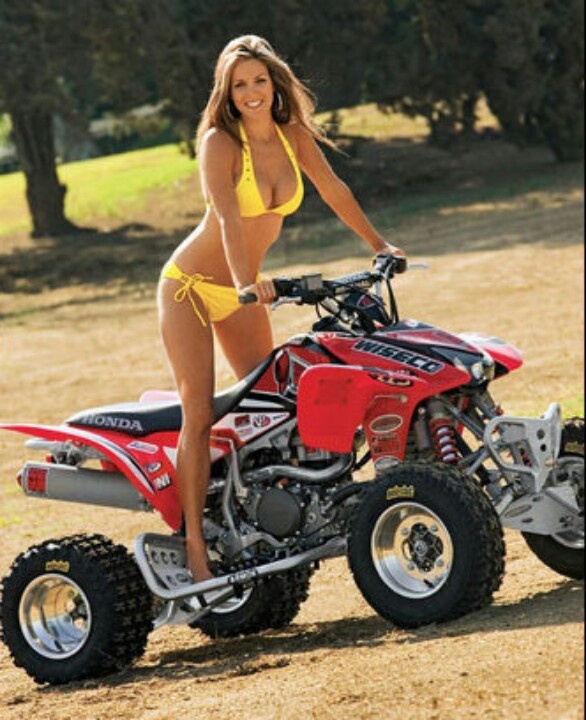
Think of yourself as your child’s very own safety instructor. You should try to reinforce the importance of safety gear and safe riding techniques. In the beginning, this will require a lot of attention. But over time, with persistence, they will start to catch on to the safety rules you set in place all on their own.
It’s a good idea to set safety rules for your kids that they must follow every time they use an ATV. I will go over some examples we’ve used that seem to have worked well for us later on.
Depending on the age you start your kids off on ATVs, you will have to supervise their first outings pretty closely. It’s good for them to have you nearby to ask questions. Not to mention all the ‘look what I can do!’ they will most certainly enjoy having you there with them.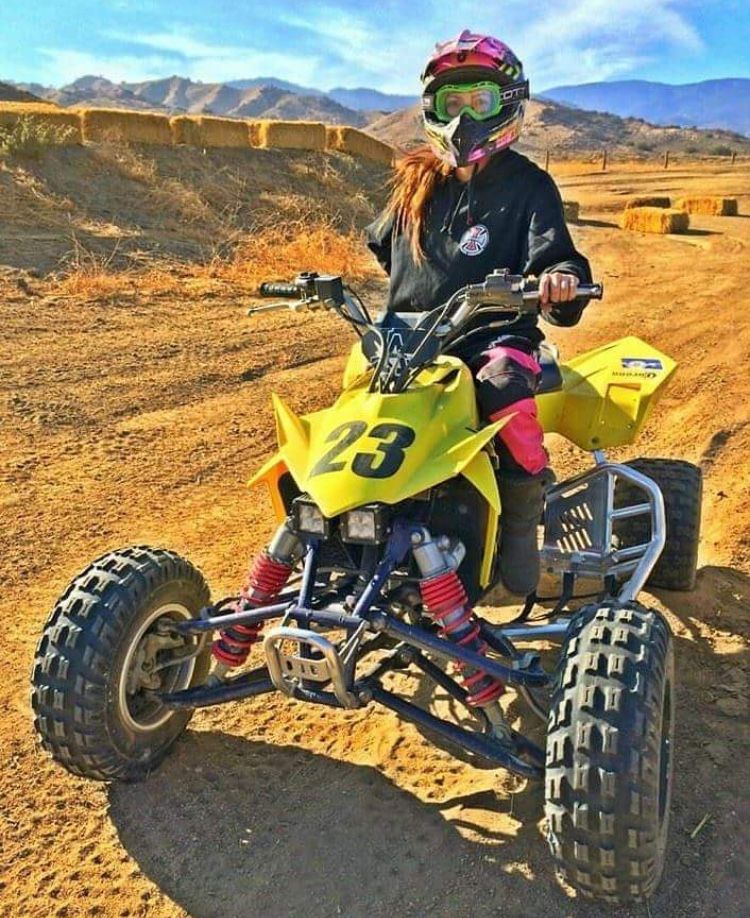
But more importantly, you should be watching how they ride. Keep note of anything you want to discuss with them later that will help them develop their riding skills.
The age old saying ‘teach em right, teach em young’ most definitely applies with ATV riding. If you get the right techniques and safe riding skills down early on, it will carry on as they grow older, keeping them safer on the trails even after they out ride you.
But what techniques do you teach them, and what safe riding practices should you have them follow? Not to worry, we will go over that later, but first lets talk about what age they can start and what quad will fit them best in the beginning.
It’s generally recommended that you wait until your child is 6 years old before you get them started riding ATVs. If your child is showing advanced motor skills at 4 or 5 years old, you may be able to start them a little earlier. But most small ATV manufacturers recommend the rider be at least 6 years old.
If you’d like to start them younger than that, you could always get them one of those small electric ATVs rated for 3 year olds. That way you can start teaching them the basics and safe riding early on. A good example is this 12V Kids ATV Four Wheeler from Amazon for around 130 bucks.
Most of the small kid sized ATVs will come with a throttle limiter that lets you set the maximum speed the quad will go. This is a good idea to set yourself, in case your kid wants to get a little throttle happy, they won’t be able to get up to dangerous speeds.
Throttle Limiter ScrewThe throttle limiter is usually located up on the handle bars by the throttle lever. You should see a screw sticking out of the housing, with a nut holding it in place. Simply loosen the nut and adjust the throttle limiter screw to your desired setting. All the way in is fully limited, all the way out is not limited at all.
| Age | ATV Size In CC | |
| 6 – 8 | 50 cc | |
| 8 – 11 | 90 cc | |
| 12 – 15 | 125 cc | |
| 16+ | 250+ cc |
This chart is just a reference for starting your child out on which size quad. This won’t necessarily be the size quad they can handle when they get into that age bracket.
This won’t necessarily be the size quad they can handle when they get into that age bracket.
For example, if you started your kid on a 50cc when they were five, by the time they’re 12 they may want a 250cc, and will probably be able to handle it. But if your child is 12 now, and you’re starting them riding for the first time, 125cc might be a safer bet.
I always like to look through the users manual myself a little bit to get an idea of the components of the ATV. This is a good precursor to actually riding for the kids too. They may be a bit jumpy and not like this step so much, but for me, I think it’s worth it.
It’s good to show them how the ATV works, recommended maintenance, and safety requirements that come straight from the manufacturer. That way they see that the safety rules you set in place are meant for everyone, not just them.
I like to do a walk around the quad with the kids to show them where the important components are.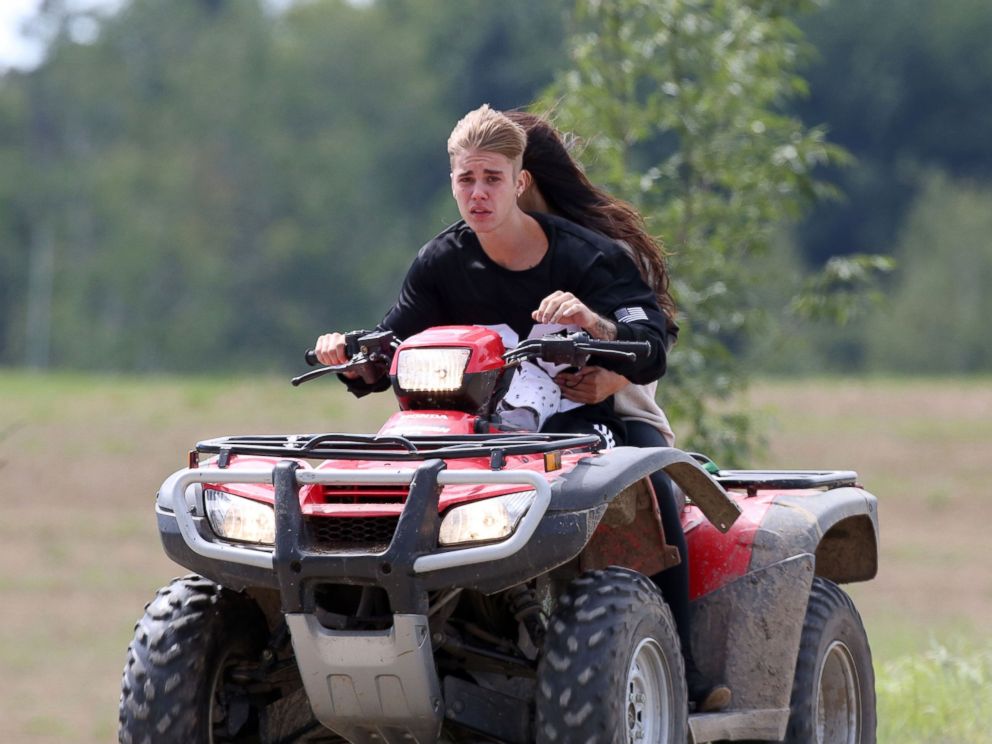 For example, I would show them the front brake lever, and them show them the front brake and explain that is how the ATV will slow down.
For example, I would show them the front brake lever, and them show them the front brake and explain that is how the ATV will slow down.
This part is really up to you to decide how thorough you want to be. If you’re like me, you want your kids to maintain their own quads themselves one day. So talking about the different parts of the quad and what they do doesn’t hurt.
Of course, a helmet and goggles are the most important pieces of safety gear for anyone riding an ATV. But I would also recommend a good pair of riding boots and gloves as well. Some parents even require their child wear a neck collar to protect their neck in case of a crash.
Safety gear is a pretty big topic all to itself so I wrote a Protective Gear For Children On ATVs article to go into a lot more detail about safety gear, as well as give you some examples of the most trusted safety gear for kids on the market.
You really should make a set of safety rules, and make sure your kid knows them before getting out on a quad. Of course, the rules you make for your kids is up to you, but here’s an example of some of the riding rules we use.
Of course, the rules you make for your kids is up to you, but here’s an example of some of the riding rules we use.
Those last couple had to be added just recently. The best way to make sure your kids follow the rules, is to follow them yourself. Lead by example, and the kids will just naturally accept and follow the rules with you.
I recommend staying off paved roads while you teach them the basics of riding. Most ATV tires aren’t made for pavement anyway, and it could skew how they feel the quad will handle.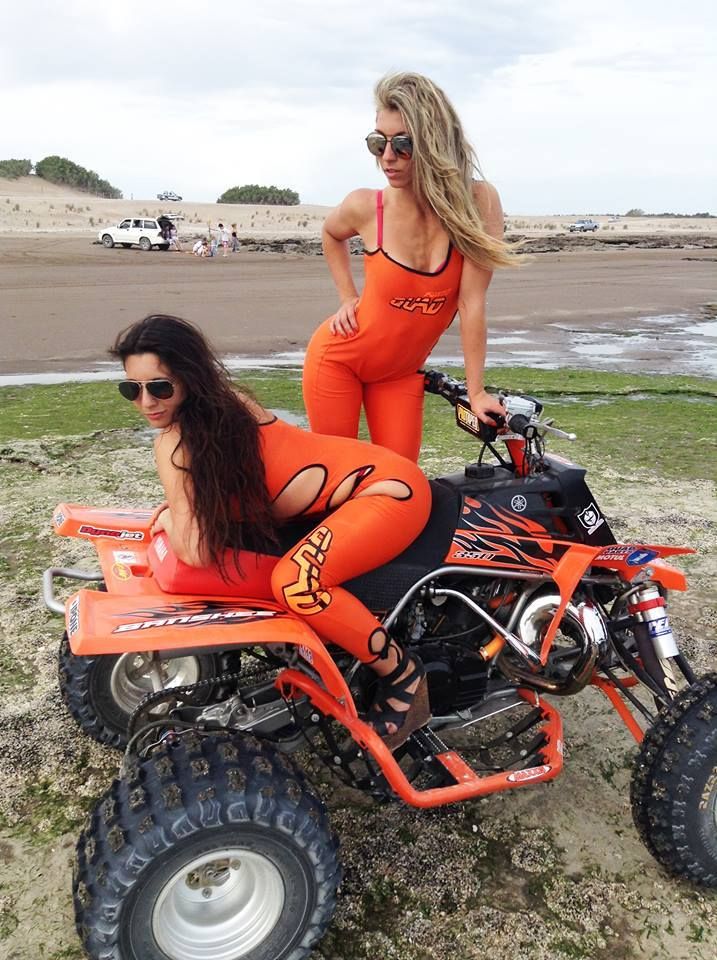 Stick to off road dirt trails or something like an open field to start practicing in.
Stick to off road dirt trails or something like an open field to start practicing in.
Alright, you’ve got the safety rules down, you’ve got the safety gear on, you’re in a good open place to ride. Now let’s get into the actual riding.
I’ve found the best way to get them going at first, is to just practice starting the ATV, accelerating forward a little bit, and then coming to a complete stop. It’s a good idea to just be standing there next to them, and walk along side them as they do this.
Be ready to grab the brake if you need to, but usually they get what the brakes do and are good about using them. Just try stopping and starting for a little while so they get the feel of how to accelerate and get familiar with the brakes.
After they get the feel of the throttle and the brakes and you’re confident they can handle it. Try having them do some turning. Get them to ride in a big circle and then have them try doing some figure 8’s to get a feel for the handling of the quad.
You could try laying down some cones or old soda cans, anything that they can try steering through or in and out of to get some practice. Now’s a good time to remind them that the cones will be trees on the trail, and if they hit a tree, they could get hurt.
After you’re confident they can ride the ATV on their own in the open area, you can start taking them on the trail with you. Getting to this point will take more or less time for different kids, just try to be patient with them.
During the first few trail rides, I would suggest following them, but tell them to go really slowly at first. I used to think it was best that they followed me. so I could set the pace. But once I started letting them lead, I could notice things about their riding that I could make suggestions about to help them become better riders.
If you do decide to let them lead at first, make sure you’re on trails you’ve riden before to prevent any surprises. Also, I would stay away from big puddles or any deep water until they get a little more experienced.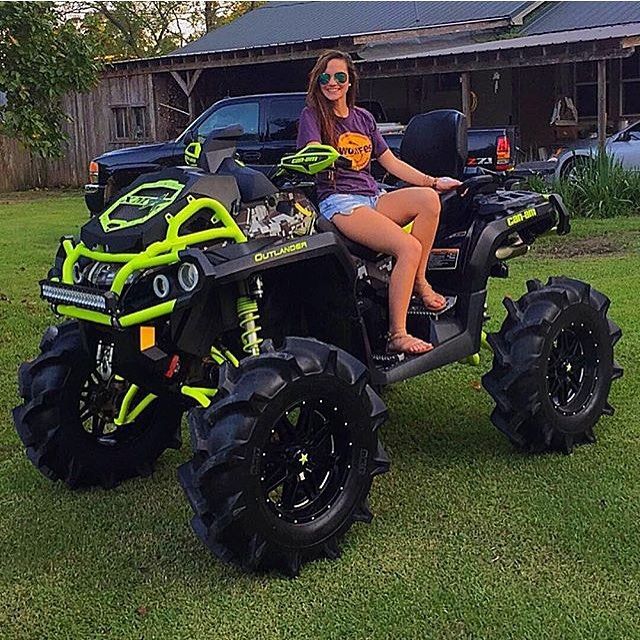
Keep practicing with your kids and helping them to become better riders, and they will be out-riding you in no time. Off-roading really is a family sport, and it’s a blast getting out on the trail with the whole family.
Sharing is caring!
Recently, an ATV is in great demand, so the question of insurance for this vehicle is often asked by insurance experts. An unequivocal answer can be obtained by referring to the rules of the road. The law states that any vehicle involved in road traffic is subject to insurance.
According to the legislation of the Russian Federation, an ATV is a self-propelled machine, that is, a type of equipment that is rarely used on the road (combines and tractors also belong to this type of machine), but if an ATV is used to move along the roadway, that is, it participates in road traffic, registration of OSAGO on it is mandatory.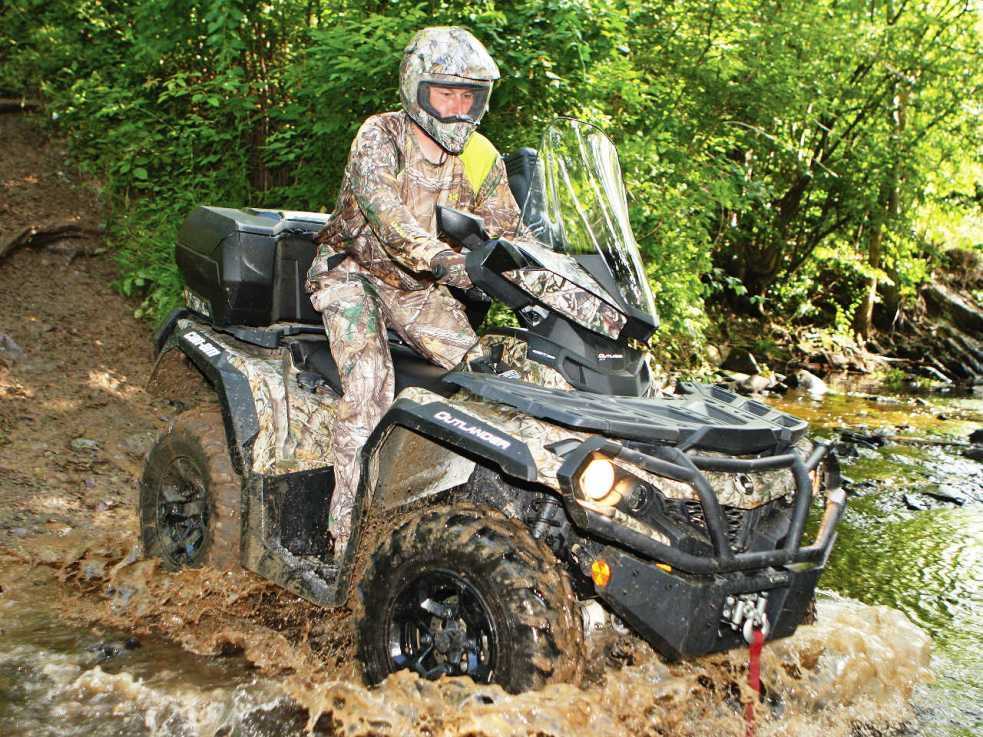
That is, even if the ATV is not used in city traffic or on the highway, but only moves outside the city, it still needs to be insured on the roads that other vehicles use. The fact is that even outside large settlements, this type of equipment can cause damage to another vehicle, which means that there should be an OSAGO policy for such cases.
In other cases, when the ATV is used only for sports and recreation in a country house, insurance is not required.
According to reviews on various resources, drivers are increasingly faced with a situation where the company does not issue insurance for all-terrain vehicles. At the same time, referring to various reasons: lack of forms, unavailability of the PCA database, computer failure, lack of a license for motorcycle insurance. There is no legal basis for such refusals. Faced with a similar situation, it is worth requesting a written waiver. After receiving an official letter from the insurance company, you need to write a complaint, indicating in it the name of the company, full name and position of the employee and the address of the office. You can send a complaint to the following authorities: the Central Bank, the RSA, the Antimonopoly Service, Rospotrebnadzor.
You can send a complaint to the following authorities: the Central Bank, the RSA, the Antimonopoly Service, Rospotrebnadzor.
Important: you can send a complaint to several instances at once. After all, the refusal of the insurance company to issue a policy does not give the right to use equipment without a policy and, if the vehicle is stopped by a traffic police officer, a serious fine will be issued.
So, if an ATV is used to move along the roadway, that is, it participates in road traffic, registration of OSAGO for it is mandatory.
Due to the fact that ATVs are not registered as often as we would like, they are more often registered not with the traffic police, but with the Gostekhnadzor, which is not able to detect stolen goods in the absence of databases and workers in the places of operation, the number of thefts of this equipment is growing. CASCO can help to insure against theft of not cheap equipment. But here, too, insurance companies do not treat ATVs with trepidation, trying to refuse. The reasons are clear: equipment is constantly tested for strength, it can be stolen for the above reasons. That is, the risks of the insured company are great, but they are in no hurry to refuse.
But here, too, insurance companies do not treat ATVs with trepidation, trying to refuse. The reasons are clear: equipment is constantly tested for strength, it can be stolen for the above reasons. That is, the risks of the insured company are great, but they are in no hurry to refuse.
Attention: when insuring CASCO, you should carefully read all the papers: the amount of insurance payments, insured events and, of course, evidence of insured events and risks. You should read each point in order not to be left without equipment and without payments, or with a minimum compensation that will not even cover the cost of paying for insurance.
Since 2003, all vehicles that travel on state roads must be insured. In 2018, the conditions have not changed. If you plan to drive your ATV on roads where other vehicles move, an insurance policy is required. Before issuing a compulsory insurance policy (OSAGO), some features should be considered:
- only those who plan to travel on state roads need to buy protection
– you need to pass a technical inspection before insurance
– you should buy OSAGO only for the months you use (winter or summer)
nuances in the preparation of relevant documents. Let's try to understand one of them. Do you still need quad bike insurance? The answer is positive: without insurance and technical inspection, GOSTEKHNADZOR will refuse to register.
Let's try to understand one of them. Do you still need quad bike insurance? The answer is positive: without insurance and technical inspection, GOSTEKHNADZOR will refuse to register.
When calculating the cost, the following factors will influence the premium:
- the market value of the equipment at the time of insurance.
- tariff offered by the insurance company
- number of drivers and their experience
- accident-free driving
- period of use.
Reference: when insuring OSAGO or CASCO, remember that, first of all, you insure yourself against all sorts of troubles. Carefully study the contract, pay special attention to the clauses on the payment of the insurance premium.
13 Jul
AQUA PRINT technology appeared in Japan more than 20 years ago.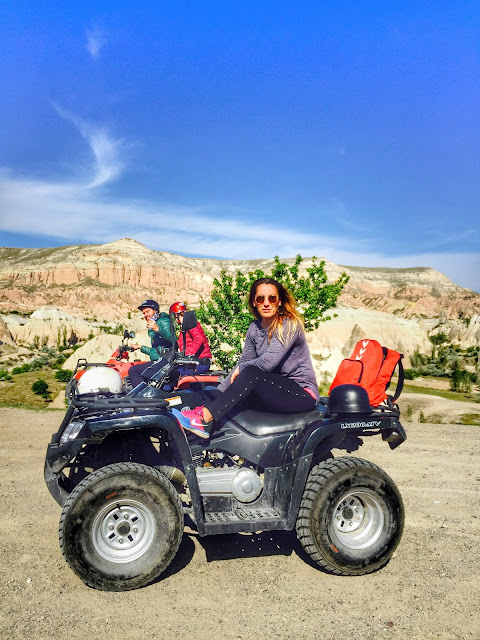 Since then, this technology of drawing on various surfaces has been...
Since then, this technology of drawing on various surfaces has been...
Read more
13 Jul
We present to your attention the tuning of the ATV OUTLANDER MAX 650 XT. The following types of work were performed within the framework of the project: Individual...
Read more
13 Jul
Introducing Can-Am OUTLANDER 1000R XMR ATV Tuning The equipment was additionally installed: protection wardrobe trunk gun holster
Read more
13 Jul
Additionally installed on the ATV: Radiator removal kit: allows you to move the radiator to the top of the ATV; p.